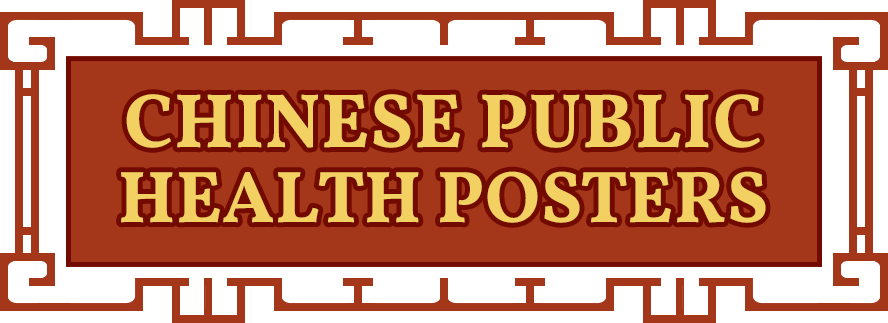Class 3
Class 3 Overview: Communication Techniques for Public Health
Mobilizing People: Public Health Campaigns in China is a high school lesson plan that uses several Chinese public health posters from the latter part of the 1900s and early 2000 as primary sources. Students work with these online posters, applying their existing knowledge of spoken and written Chinese as well as acquiring new vocabulary.
The class vocabulary list provides both traditional and simplified Chinese characters used in this lesson plan.
Handouts
[Note: Student handouts with Chinese characters are both in simplified and traditional Chinese. Teachers are to review and determine whether to use one or both characters based on the established practices of their respective school systems.]
- Anticipation/Reaction Worksheet (PDF) (MSWord); Teacher's Anticipation/Reaction Worksheet (PDF)
- Class 3: Vocabulary Worksheet (PDF) (MSWord)
- Rhymes Used in Health Campaigns (PDF) (MSWord)
- For Extension Activity: Poster Project Instruction and Grading Rubric (PDF)
Other materials and set-ups:
- printouts of the posters listed above, or access to the computer lab for students to view those posters online during class periods
- small white boards or letter-size color or white papers for students
- markers, in a variety of colors
- a display set-up for the class (e.g., overhead projector and screen, Smart or Promethean board, class computer) to project the following posters from the Chinese Public Health Posters and Classics of Chinese Medicine online exhibitions:
- Hand out copies of Anticipation/Reaction to students and review as a class the two–part instruction, the statements, and “Before” and “After” reading response columns on the left and right, respectively. Tell student that they can apply their previous knowledge, including the vocabulary and structure learned in previous classes, visual information, common sense, and logical thinking to figure out the general message of the poster and the Chinese text.
- Conduct part 1 of the instruction by displaying the War Against SARS poster from Class 2, Step 5 for one minute for students to view, then to put their true–or–false responses to the five question on the left column under the heading, “Before Reading.”
- Distribute printouts of the poster for students to examine closely then to record their answers under the “After Reading” columns on the right.
- Review the “Before” and “After” reading answers as a class by having several students volunteer their before and after reading responses to the statements. Have students explain their strategies for answering the questions, and if or why they revised their answers after close examination of the poster. See Teacher's Anticipation/Reaction Worksheet.
Evaluations:
In addition to observing and assessing students during class discussions, teachers can evaluate student progress by reviewing completed worksheets collected during all three classes.
Extension Activities:
- Hand out the Poster Project Instruction and Grading Rubric and review the project scope and how students’ posters will be graded. Assign students individually or in groups to design and bring their completed posters to the class by a certain date. Display students’ posters by hosting a poster session in the class where students display their posters and talk with other students about their posters in Chinese. Students may be given three criteria to rate other students’ posters.
- Build on the poster project by having students work in groups to produce three public health posters targeting Chinese Americans living in the United States. Student groups research and select one major health issue among Chinese Americans; gather information or identify the preventions and treatments related to each health topic; then produce a poster as well as public service announcement.

